COMPUTING CLOSER TO THE USER
Although 5G networks and the Edge have emerged and grown independently, they share a core objective: enabling advanced, low-latency applications by bringing computing closer to the end user. Today, telecom providers are deploying their own edge resources and exploring relationships with existing edge computing providers to support their growing 5G networks.
As edge computing has become increasingly essential to critical business operations, the sites have become more robust and sophisticated, with enterprise-level availability requirements and remote monitoring and management capabilities. At Vertiv, we enable this functionality through smart AC UPS and power distribution systems, efficient thermal management solutions, simple-to-use monitoring platforms, advanced console servers and KVMs, and integrated, modular systems that efficiently bring it all together.
Which ecosystem wil be most important in the creation of new revenue services from the edge?

Case Study
As one of the largest wireless service providers in the United States prepared to bring cloud data closer to the edge of its 5G network, it asked Vertiv to boost capacity through an overhaul of its mobile telephone switch office (MTSO) sites. Vertiv provided Liebert® EXL S1 uninterruptible power supply units, Liebert® DSE 400 free-cooling economization systems, and the IT expertise needed to execute this provider’s 5G strategy.
EDGE TECHNOLOGY TO SUPPORT 5G
Key Considerations
- Sizing power to meet current and future requirements
- Enabling connectivity for remote monitoring
- Addressing greater mix of power due to network convergence
- Leveraging limited space at existing sites
- Evaluating line interactive versus double conversion UPS topologies
- Ensuring adequate resources are available for UPS service
Resources
Key Considerations
- Evaluating heat load to determine need for dedicated cooling
- Enabling remote environmental monitoring
Key Considerations
- Identifying the key variables required for monitoring
- Ensuring power and thermal infrastructure are equipped for connectivity
- Ensuring resources are available to monitor and respond to alerts
Key Considerations
- Evaluating potential for standardizing infrastructure to simplify ordering, configuration and deployment
- Determining feasibility of using factory integration services to receive IT-ready infrastructure on site
- Determining the availability and skill level of resources to install edge technology
Key Considerations
- What local resources are available for installation and servicing of remote resources
- Ensuring timely response to service requirements, such as low
battery capacity
GET IN TOUCH WITH US
Fill out the form or give us a call to connect to a specialist. Call us now 800-209-6070.
Thank you for your submission!
We will contact you shortly.


